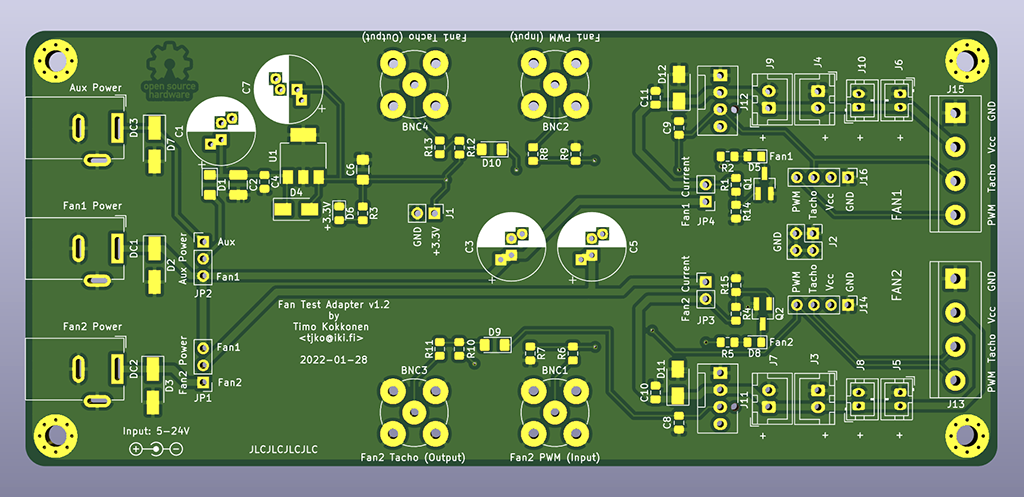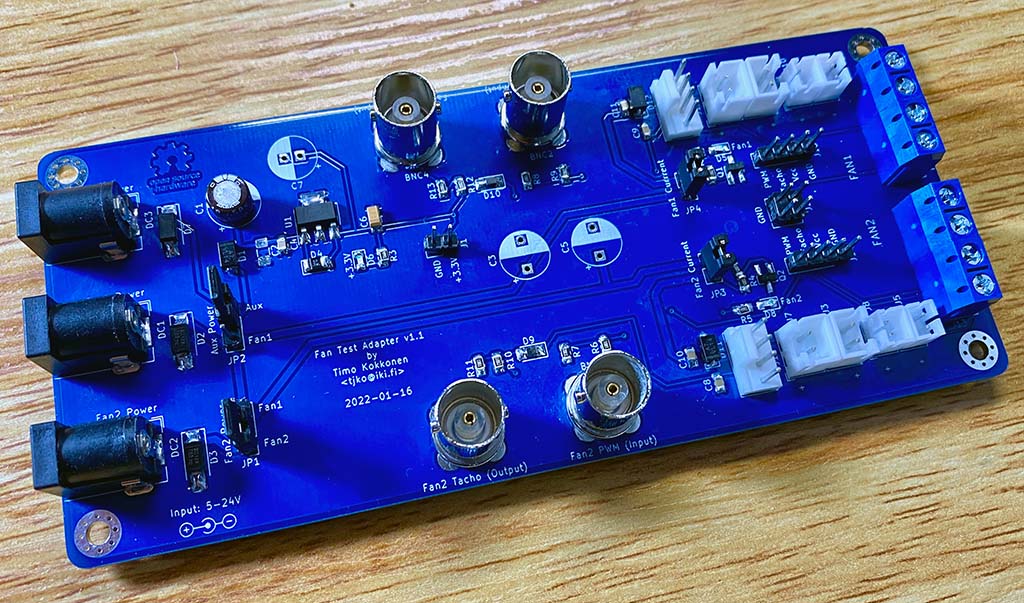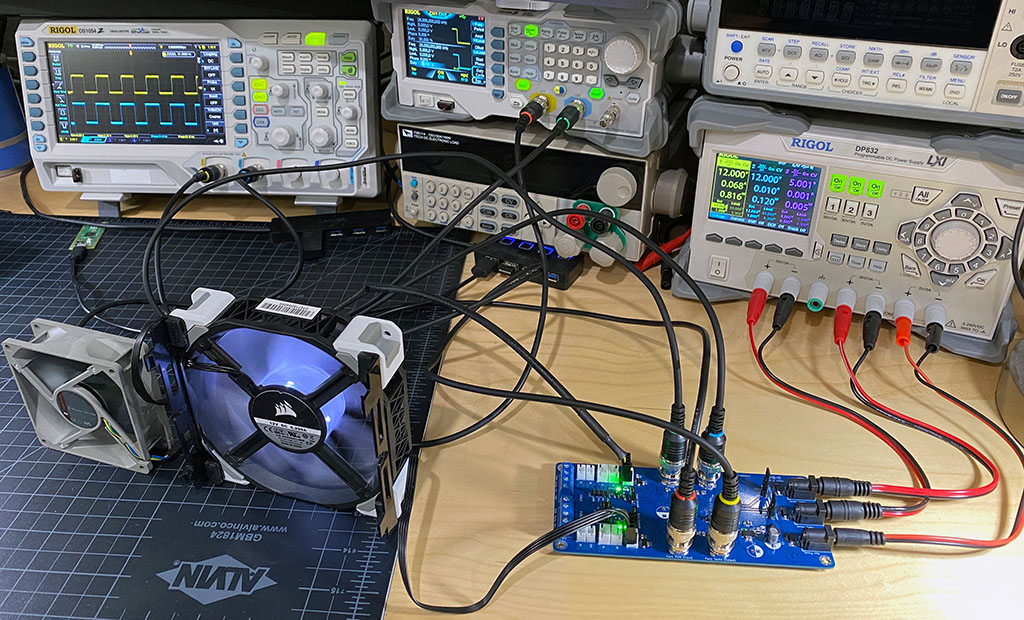Adapter PCB board for easily testing PC (PWM) fans.
Adapter was created to simplify characterising PC fans. It's mainly meant for PWM fans, but can also be useful for 3-pin PC fans. Adapter also has common JST connectors for common 2-pin fans. This adapter was used in development and testing of Fanpico (Fanpico is a smart PWM fan controller) to "emulate" motherboard FAN outputs.
Adapter is meant to be used with
- 3 channel programmable power supply (but will work fine with 1 or 2 channel PSUs)
- 2+ channel oscilloscope (or frequency counter)
- 2 channel signal generator
This is only adapter for easily testing/controlling PWM fans. If used incorrectly it could easily damage your fans, etc...
Fan Test Adapter has three DC power jacks. It can be used only with power supplied to "Fan1 Power" jack, but it may be desirable to use all three, depending on how adapter is being used.
This is can be used to power the board itself (3.3V power rail, LEDs, etc). This can be useful if doing fan power consumption measurements via measuring supplied power to Fan1/Fan2 connectors. When using this connector make sure jumper Aux Power is set to Aux position (and Fan2 Power jumper is set to Fan2 position).
Recommended supply voltage is 5V (however up to 24V can be used if needed).
This is used to provide power to Fan1. Additionally Aux Power jumper can be set to Fan1 position if AUX Power is not used.
Recommended supply voltage is the nominal voltage of the fan being tested (Voltage should be in range from 5V to 24V max).
This is used to proive power fo Fan1. If this connector is used remember to set Fan2 Power jumper to Fan2 position.
Recommended supply voltage is the nominal voltage of the fan being tested (Voltage should be in range from 5V to 24V max).
Normally closed. Can be used for precise current measurement of Fan1 power consumption, by removing the jumper and connecting current meter in the pins.
Normally closed. Can be used for precise current measurement of Fan2 power consumption, by removing the jumper and connecting current meter in the pins.
Jumper to select whether board itself (3.3V power rail) is powered from Fan1 Power or Aux Power power connector.
Jumper to select whether Fan2 is powered from Fan1 Power or Fan2 Power power connector.
Input for PWM signal to control fan speed. Typically (with PC fans) this is 25kHz PWM signal (0-5V).
Adapter generates 3.3V TTL signal from the open collector tachometer output of the fan. So this is generally safe to be read direcly with a 3.3V (or 5V) MCU.
- See PCB section for how to get PCB manufactured (currently it is only few dollars pre PCB to have these manufactured).
- List of needed components can be found here: BOM
- Some of the components are optional (but can offer some protection) for details see: Schematic
Kerber files ready to be sent to a PCB maker (like JLCPCB, etc):
Currently this is only a DIY project. However PCBs are occasionally available (in limited quantities) at: eBay


